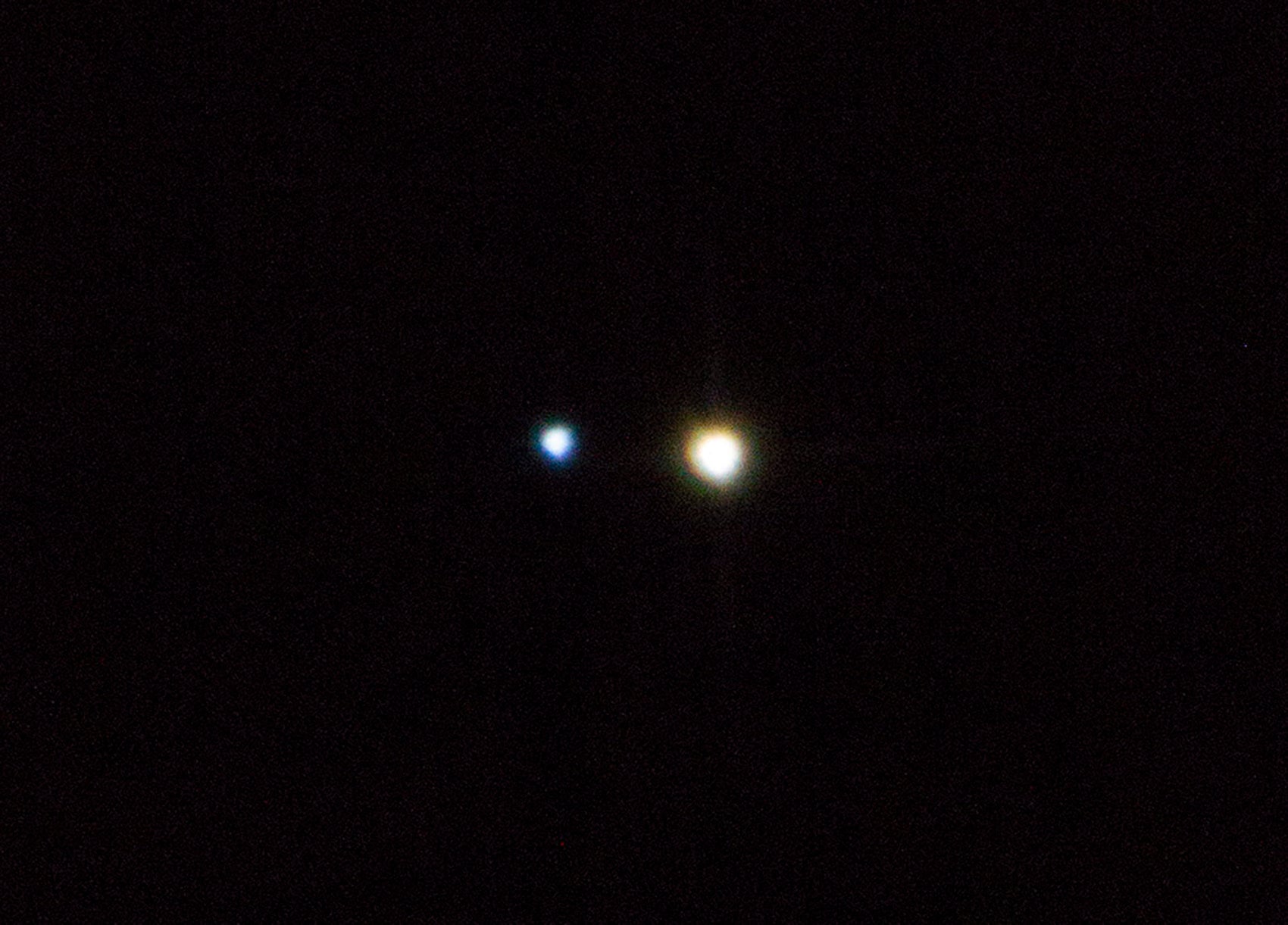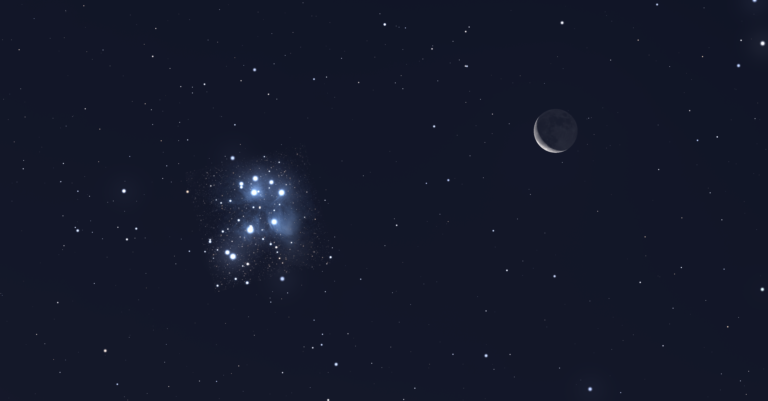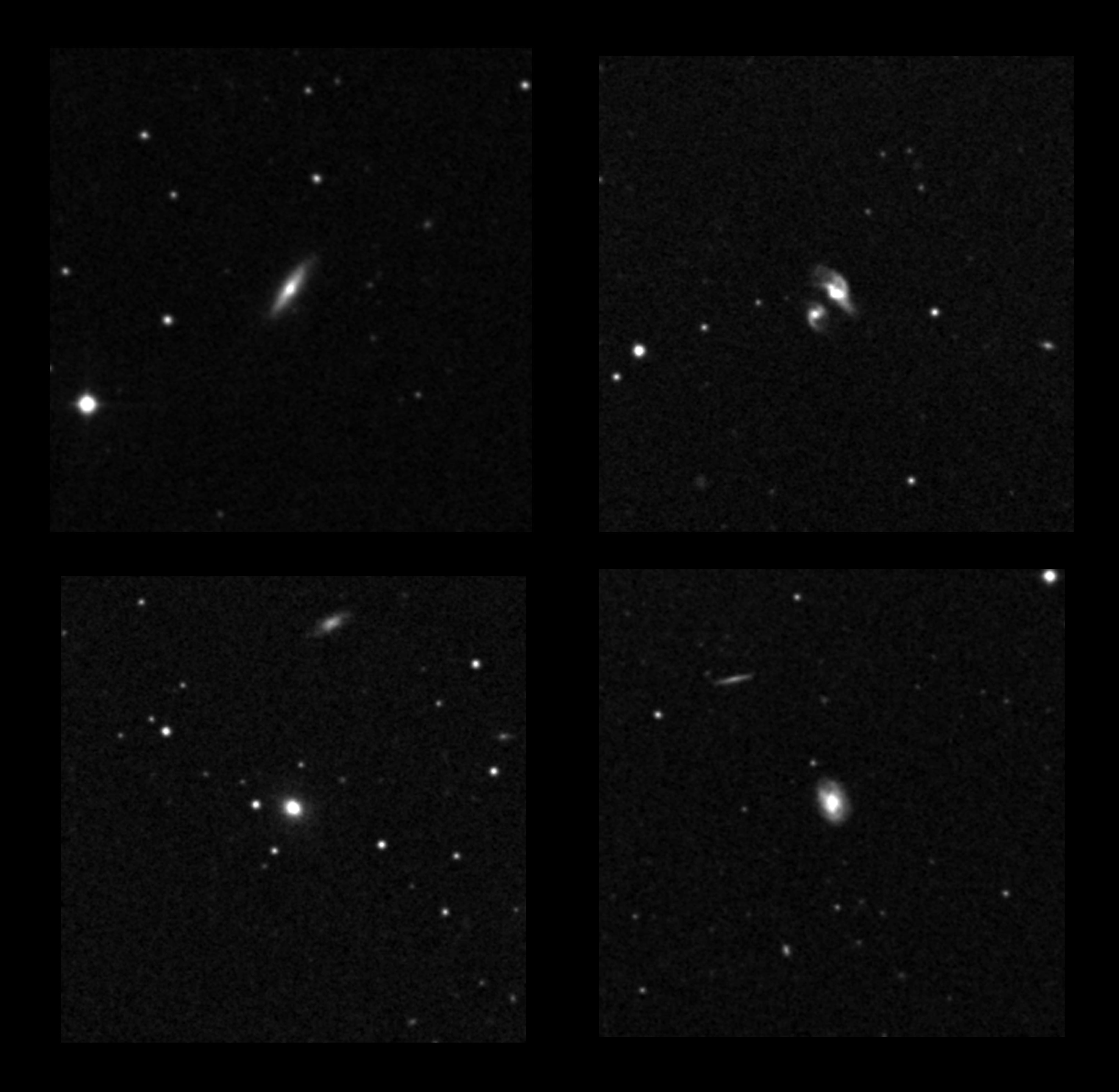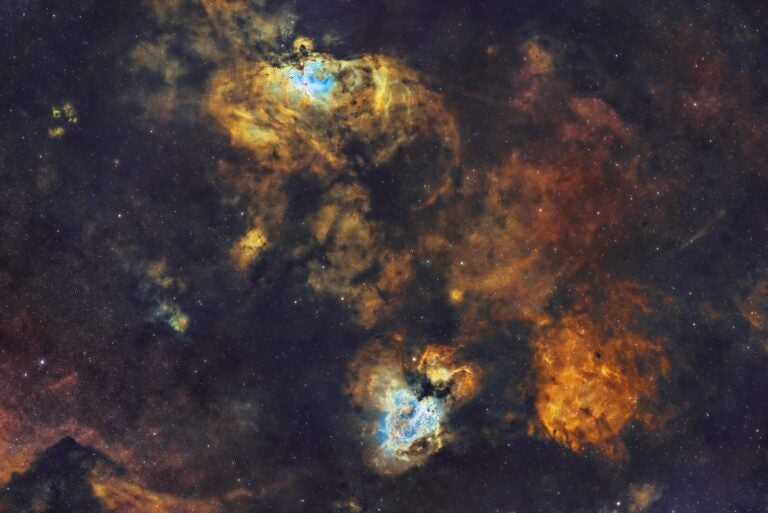
For many of us, light pollution has robbed our skies of once readily visible objects. That’s why many residential observers have turned away from nebulae and galaxies to pursue other targets, such as double stars.
This month, let’s enjoy a few of my favorite springtime binocular binaries.
We begin with a challenging binocular target, Iota (ι) Cancri. Often described as the Spring Albireo for its colorful yellow and blue components, Iota’s two stars shine at magnitudes 4.0 and 6.6. But they are only separated by 30″. That’s a little too close to resolve with handheld 10×50 binoculars, but doable if they are supported on a mount. Iota can also be split in two with an image-stabilized 10x binocular and is lovely through 16x70s.
Now head to the constellation Leo the Lion. From the triangle marking Leo’s hindquarters and tail, follow an imaginary line southward from Chertan (Theta [θ] Leonis) to 4th-magnitude Iota Leonis and then to Sigma (σ) Leonis. From Sigma, look for a four-star arc just 6° (about a field) southeast. The brightest star in the arc is 5th-magnitude Tau (τ) Leonis. Tau forms a wide binary star with a magnitude 7.5 companion 1.5′ to its south. In his 1909 book In Starland With a Three-Inch Telescope, William T. Olcott described the appearance as “lemon and light blue.” If you defocus your binoculars, you may get a hint of those colors.
Olcott also mentioned a “second pair in the field.” He was referring to 83 Leonis, just 20′ northwest of Tau. It’s paired with an 8th-magnitude star 14″ southeast. Although potentially challenging, it can be accomplished with 10x binoculars.
But by shifting Tau toward the northwest corner of your view, you’ll find three easier doubles arranged in an X-shaped asterism known as the Double Cross.
East of Leo, the faint constellation Coma Berenices is home to the Coma Star Cluster (Melotte 111). Swing your binoculars to the two beautiful binaries within. First, there’s 5th-magnitude 12 Comae, which is joined by a 9th-magnitude field star 60″ to the southeast. If your 10x binoculars are steadily supported, splitting the pair is possible; higher-power lenses divide them easily, offering a hint of 12’s yellowish tint.
The second duo in the Coma Cluster is 17 Comae. Here, we find a 5th-magnitude primary sun accompanied by a 7th-magnitude companion 145″ to its west-southwest. Both appear pure white and are easy to split.
Nestled below the bowl and handle of the Big Dipper is the faint constellation Canes Venatici the Hunting Dogs. The dogs’ brightest star, 3rd-magnitude Cor Caroli (Alpha [α] Canum Venaticorum), lies about halfway between Phecda (Gamma [γ] Ursae Majoris) in the Big Dipper’s bowl and Arcturus (Alpha Boötis). Once you find Cor Caroli, itself a binary star suitable for 20x and higher binoculars, look to its northeast. You should be able to see 17 Canum Venaticorum, a pretty pairing of 6th-magnitude white suns separated by 276″.
Aim 5° northwest of Cor Caroli for the Hunting Dogs’ second-brightest star, Chara (Beta [β] Canum Venaticorum). By extending the line connecting the two another 6° west-northwest, you’ll come to 5th-magnitude 67 Ursae Majoris. One look will show that 67 is not alone, but rather is accompanied by three friends. The white primary star is joined by a yellow 7th-magnitude secondary star 5′ to the east-northeast. A third golden 9th-magnitude companion is found 6′ west of 67, while the fourth star, a 9th-magnitude pale yellow point, is 15′ northeast of the primary. Detecting the subtle colors will likely take at least 70mm or 80mm binoculars.
If this survey piqued your interest in observing double and multiple stars, point your internet browser to the Astronomical League’s Binocular Double Star Observing Program at www.astroleague.org. Membership is required to earn a certificate of completion, but anyone can enjoy their list of 120 binocular targets.
Have a favorite double star that you’d like me to mention in a future column? Contact me through my website, philharrington.net. Until next month, remember that two eyes are better than one.









